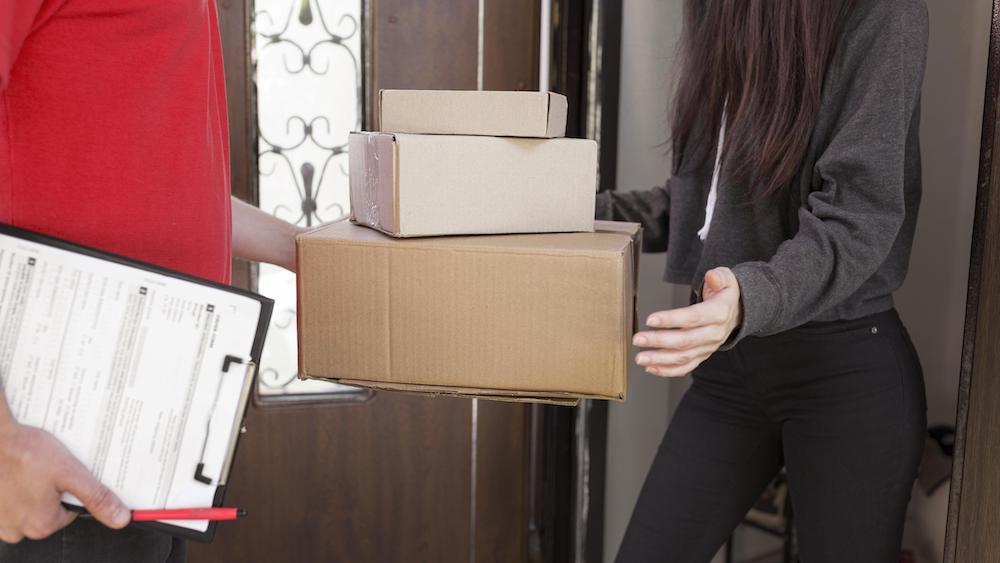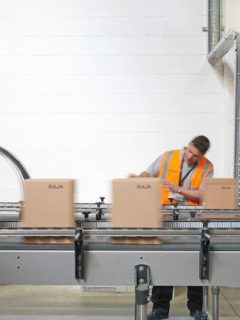It’s no secret that your customers expect deliveries to be faster and easier for them to follow, but also more environmentally friendly.And what if innovations in urban logistics, and in particular new delivery methods, could help you meet these challenges? This is the challenge that this article takes on, by proposing that you discover these delivery methods in urban areas, as well as additional tips to enhance your customer experience in an eco-responsible manner.
Why consider innovative delivery methods?
Currently, urban logistics and its traditional delivery methods are experiencing real limitations
- Urban space is becoming increasingly congested
- The vehicles offered by traditional transporters have a particularly high carbon footprint
- The problem of noise pollution is also becoming more and more prevalent in urban areas
- Delivery drivers are finding it difficult to park properly (it is estimated that over 80% of deliveries are parked illegally), with an increased risk of ‘botched’ deliveries, which can damage the customer experience
the concern is such that the The Future of the Last-Mile Ecosystem, menée en 2020 estime que, d’ici 10 ans, si rien n’est fait pour fluidifier et moderniser la logistique urbaine, le nombre de véhicules dans les 100 premières villes mondiales augmentera de 36%. Les conséquences en seraient désastreuses : +21% d’embouteillages, et +32% d’émissions dues au trafic de livraison.
Au-delà des soucis d’éco-responsabilité, en tant que e-commerçant, vous devez absolument vous intéresser à des solutions qui permettent à vos clients d’être livrés plus rapidement. En effet, c’est bien connu : des délais de livraison trop importants, tout comme l’absence de choix entre différents modes de livraison, constituent une des grandes raisons d’abandon de panier.
Sans compter que la livraison du dernier kilomètre est également la plus coûteuse pour vous ! Au fur et à mesure que le produit se rapproche de son destinataire final, le coût unitaire de transport augmente et arrive donc à son apogée au cours du dernier kilomètre . On l’estime à
20% des
f
- Reduced ecological footprint
- Less congestion of parking spaces and traffic lanes
- Less noise pollution in the urban space
note that this is one of the new delivery methods with the most “wow” effect for your customers. When they receive their order, they see your ecological commitment directly from their doorstep.Which transporters offer these services? We can mention Vert Chez Vous and Stuart in particular.
Transporters with “green” fleets Driven
by the expectations of end consumers and e-retailers, many last-mile transporters are now paying attention to the ecological impact of their practices. Most of them are beginning to integrate vehicles running on green or renewable energy into their fleets. This is the case, for example, with vehicles thatuse renewable energy
- Running on Natural Gas for Vehicles (NGV) or biogas
- Hybrid or even fully electric
some transporters are even going so far as to sign ecological charters, such as the “Objectif CO2” charter.Which transporters offer these services? Once again, you can find them at Vert Chez Vous or Stuart.
The automatic deposit
Although it is still in its infancy in France, the automatic deposit has a bright future ahead of it. The principle: your customers can come and pick up their parcels 24 hours a day, in a locker secured by a unique code. The method has several advantages
- Shorter delivery rounds for delivery drivers, and therefore less environmental impact
- On the customer side, flexibility to choose where to drop off the parcel, and to pick up the parcel whenever they want
on estime que cette méthode de livraison urbaine innovante pourrait réduire les embouteillages de 5 à 18% (selon les scénarios envisagés)… et, bonne nouvelle : les frais de livraison pourraient être eux aussi réduits de 2 à 12% !
Quels transporteurs proposent ces services ? En France, on constate le développement des Amazon Lockers, uniquement dédiés aux livraisons du géant du e-commerce. La Poste s’y met aussi progressivement, avec son service Pickup, positionné dans bon nombre de ses bureaux de Poste en agglomération.
La livraison collaborative
Il y a encore quelques années de ça, il semblait improbable de partager la voiture d’un inconnu pour se rendre d’un point A à un point B. Le covoiturage ayant fait son petit bonhomme de chemin, son principe s’est désormais étendu à la logistique urbaine : c’est ainsi qu’est né le crowdshipping, ou la livraison collaborative.
Le principe est connu : des particuliers prennent en charge les colis d’entreprises e-commerce
,
en lieu e
- Autonomous vehicles: shuttles, buses, or even trucks, capable of delivering parcels in a totally autonomous manner, thanks to on-board Artificial Intelligence
- Drones: still very limited in France, delivery by drone is only becoming more widespread in the United States
certes, ces solutions de livraison e-commerce restent marginales pour l’heure, et leurs applications au monde de la livraison seront sans doute très locales: des livraisons courtes, assez légères, peu volumineuses. Cependant, on peut bel et bien s’attendre à une explosion de ces nouvelles technologies logistiques dans les années à venir.
Quelles entreprises garder à l’œil dans ce domaine ? Neolix, une start-up chinoise, s’intéresse aux véhicules de livraison autonomes, tout comme Udelv. La Poste, quant à elle, a conçu son propre droïde de livraison en collaboration avec la start-up TwinswHeel. Enfin, DPD est le premier transporteur en France à avoir reçu l’autorisation de livrer par drones, et utilise déjà cette solution en soutien aux livreurs par camions, pour limiter leurs déplacements hors du véhicule.

Les astuces supplémentaires pour améliorer vos livraisons
Toutefois, on le sait : les nouveaux modes de livraisons en logistique urbaine ne pourr
- Highlighton your website the different delivery methods you offer, and leave the final choice to the customer as much as possible. To stimulate the eco-responsible spirit of your customers, do not hesitate to indicate clearly which delivery method is the most ecological and the most economical.
- Choose carriers that allow your customers to track their parcels in detail, or even to modify their delivery directly. Some offer customers the possibility to indicate a place where they can drop off the parcel safely, or even help to geolocate the delivery person directly. By doing so, you are helping the carriers to carry out their deliveries (thus avoiding a second round, which is costly in terms of time and carbon emissions).
- Reduce the weight-volume of your parcels. In addition to saving on transport costs for your express or international delivery services, you will also limit the number of rounds made by the carriers. For concrete advice, please consult our complete guide on the subject of weight-volume.
- Try to get some parcels through the letterbox. As you probably know, letterboxes have a standard size, and some of your shipments can probably fit through them easily. The result: optimised delivery rounds and satisfied customers who receive their parcels quickly and without touching them. To do this, think about postal packaging.
- Facilitate the return of orders, by taking care to build a careful return policy. Fewer returns means fewer carbon emissions in your supply chain! To do this, pack your products in return packaging, specifically designed to withstand two transports.
- Take care of the unboxing of your packages. Your service doesn’t stop at delivery! The unpacking of your products (commonly known as unboxing) is part of your customers’ experience of your brand. Stimulate the “wow” effect so sought after by e-tailers by consulting our advice on how to improve the unboxing of your e-commerce packaging.
if you want to go even further in your eco-responsible logistics practices, download the 5Rs of packagingdownload the ‘How to reduce the environmental impact of your packaging’ guide and tips on how to find the best eco-responsible products for your e-commerce















